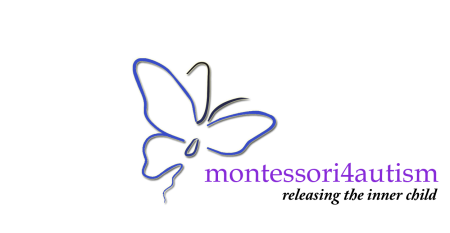Challenge of Autism
Core Characteristics of Autism Spectrum Disorders (ASD)
To develop a meaningful and effective educational model for children with autism, it is critical to understand the core characteristics of these disorders, while remembering that there can be considerable variation in their manifestation. Autistic Spectrum Disorders are characterized by impairments to a varying degree in the following developmental areas: pivotal, social and behavioral, communication and language, and physical. These deficits often mask hidden intelligence and potential of autistic children, which has profound consequences on how these students are educated.
- Pivotal Impairments
- Social and Behavioral Deficits
- Physical Deficits
- Deficits in Language and Communication
- Autism and Intelligence
Autism impacts fundamental human functions and abilities, like responding to one’s name, maintaining eye contact, attending to stimuli, maintaining joint attention, imitation, and general learning. Many abilities acquired with little effort by typical children are profoundly challenging for those with autism, making it a complex and sometimes counterintuitive condition to treat.
- Weak Social and Emotional Intelligence
- Inability and/or lack of motivation to engage with others
- Lack of empathy; limited appreciation of other people’s thoughts and feelings; inability to take another person’s perspective
- Difficulty recognizing and responding appropriately to facial expressions
- Limited awareness of surroundings and especially of other people in their surroundings
- Difficulty filtering information, making appropriate behavioral adjustments, and organizing oneself based on social feedback
- Trouble forming and organizing meaningful memories within a larger framework, as opposed to rote memorization
- Aversion to novelty and preference for strict predictability in routines
- Social anxiety potentially manifested as compulsive behaviors and/or aggression.
- Strong need for routines and external sources of order, particularly during transitions between activities. Perseveration and repetitive behaviors may serve a self-soothing function.
• Difficulty processing sensory input, leading to imbalance through over-reaction or under-reaction to sensory stimulation. Hypersensitive children find themselves overloaded with even moderate levels of sensation and attempt to block out sensory inputs such as light, sound, and touch. On the other hand, hyposensitive children receive insufficient sensory inputs and typically seek out extra stimulation. “Toe walking” is interpreted by some as a means to obtain additional stimulation. A given child may be hypersensitive in some contexts and hyposensitive in others.
• Fine-Motor Deficits. Difficulty with fine-motor skills such as writing and drawing, compounded by poor concentration.
• Gross-Motor Deficits. Tendency to bump into objects due to limited body awareness.
• Repetitive, stereotypical and self-stimulating (hand-flapping, body rocking, eye-squinting or defocusing), compulsive (stacking or lining up objects) and ritualistic behaviors (resistance to change, unvarying pattern of daily activities)
Many ASD children are nonverbal; however, it has been discovered recently that these children are often capable of communicating their needs and thoughts with the help of assistive technology. Significantly, some nonverbal individuals with access to such terminology have shown themselves to be surprisingly articulate. This provides an important illustration that verbal ability is not necessarily a reliable indicator of cognitive ability, and that there are many different ways to assess intelligence (see below).
Language acquisition is neither spontaneous nor natural for children with ASD and in many ways resembles acquisition of a foreign language by non-ASD adults. Unlike their typical peers, children with ASD do not learn readily from the environment and are not able to imitate and mirror their parents and other mature language users. Neither do they posses an innate ability to discern language rules and patterns or to apply them creatively. Moreover, they struggle with abstract concepts and have profound difficulty with sentence structure.
Notably, traditional methods of language instruction are inadequate for children with autism, who should instead be taught language through an intense program that closely parallels foreign-language learning by non-ASD adults. Verbal and nonverbal aspects of language all have to be taught deliberately and systematically. Nouns must be taught by direct reference to the things they signify. All children require this sort of association in order to learn how to read, but autistic children require it in order to learn how to speak. Likewise, other parts of speech such as prepositions and pronouns have to be introduced purposefully, and as visually as possible. The entire process of language acquisition becomes a gigantic undertaking, instead of the natural and relatively effortless process it usually is with typical children.
Since intelligence is communicated mainly through appropriate use of language, children with autism can readily appear unintelligent due to their social and communication deficits. However, this is not necessarily the case, as shown by a personal example. At his formal neuropsychological assessment between the ages of 3 and 4, my son tested at the level of a 11-month-old in verbal ability, and yet tested at the level of a 7-year-old in spatial ability. In this case, if my son had been evaluated in verbal proficiency only, the results would have led to a distorted profile of his abilities at that time and probably would have caused us to adopt a treatment strategy that was poorly matched to his strengths and weaknesses.
The assessment of intelligence is an imperfect science, and there are multiple kinds of intelligence, not all of them involving language. This point needs strong emphasis because of historical bias in the autism research and treatment fields (and in education more broadly) in favor of traditional language-centered definitions of intelligence. In a recent commentary in the scientific journal Nature1, Prof. Laurent Mottron points out that “scientists continue to use, as they have for decades, inappropriate tests to evaluate intellectual disability among autistics, which is routinely estimated to be about 75%”.
Based on his personal experience, he calls attention to special hidden talents of many individuals with autism and makes a strong case for revising educational methodologies to accommodate their unique learning style.
Full consideration of this complex topic is beyond the scope of this website. However, note that Montessori curriculum and methodology are geared towards educating the whole child and thus develop multiple forms of intelligence (cognitive, social and environmental).
References:
1. Laurent Mottron, Ph.D: Changing perceptions: The power of autism. Nature 479:35-X, 2011: Click here to open in new window
Wikipedia: Autism: http://en.wikipedia.org/wiki/Autism
Tammi Reynolds, BA & Mark Dombeck, Ph.D: Introduction to Autism, 2006: http://www.mentalhelp.net/poc/view_doc.php?type=doc&id=8763&cn=20
American Psychiatric Association. Diagnostic and Statistical Manual of Mental Disorders. 4th, text revision (DSM-IV-TR) ed. 2000.
Rose Eveleth: The Hidden Potential of Autistic Kids. Scientific American, November 30, 2011, http://www.scientificamerican.com/article.cfm?id=the-hidden-potential-of-autistic-kids


Reading your website has helped bring a lot of clarity to how we thought about getting services for our son. Your website provided some of the clearest descriptions of how to think about autism, the challenges of the IEP process, and creative alternatives to standard public options. So thank you for sharing your journey with your son. It is an inspiration to us. We share the website with other families who we encounter starting their autism journey.
My son, Cameron born with Fragile X Syndrome and adopted by our family at 11 weeks old will be home schooled this year. My son’s OT once said “he’s A Montessori kid” so I started getting library books about this exciting program and just love it! I had read a book last year titled “When slow is fast enough” and had made the decision to home school my son then. Now I am confident to use the Montessori method at home for my son with special needs. I can’t thank you enough for all your tender loving care that has gone into making this site, it is obvious. Thank you so much!
Your story is very inspiring. It suddenly made me feel that I was not alone, esp the part where you were comparing the abilities of your son to those of the children you saw when you visited the montessori for the first time. Then you burst into tears. I have been through similar situations too and can completely relate to you. This website is inspiring and I’ve been through all the pages already. Thanks a lot, your hard work has definitely made a big difference to me! Keep it up and may God Bless you and your wonderful son David.
Vera- Thank you for creating this amazing resource and sharing your story and the important – critical really – insights about hope and healing for Autism within the Montessori community.
May your efforts be blessed with great success in spreading this message far and wide, long and strong.
All the best,
Ronda Kay
Your story is both frightening and inspiring. Thank you very much for sharing it and giving hope. But you havd given far more than hope – you have given a roadmap for those determined to fight for their children. Well done!